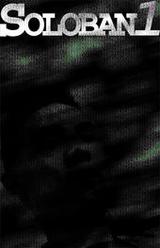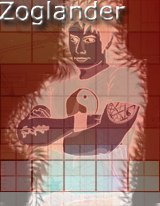|
 |
 |
| View previous topic :: View next topic |
| Author |
Message |
vidpat

Joined: November 3, 2005
Posts: 52
|
 Posted: Wednesday June 7th, 2006 10:52 pm Post subject: LoungeTalk: Hyperscore 4.3: It Just Keeps Getting Better Posted: Wednesday June 7th, 2006 10:52 pm Post subject: LoungeTalk: Hyperscore 4.3: It Just Keeps Getting Better |
 |
|
LoungeTalk
by H-Lounge Columnist vidpat
Hyperscore 4.3: It Just Keeps Getting Better
Well, our friends at the H-Lounge have outdone themselves with the latest release of Hyperscore, version 4.3. The easiest software to compose music and ringtones just got even easier to use. I recommend all new users and long-time Hyperscore aficionados download the latest version, if you haven't already done so.
With the new release, we get a number of new features that make composing (literally) more of a snap than before. Many of the features users have requested in the forums and in chats have made it in to Hyperscore. In this column, let's review some of the most significant additions and demonstrate how they can improve the way you write music.
Time: Meter, Grids, and Snapping
Upon starting a composition in Hyperscore 4.3, previous users will quickly notice that the Melody and Sketch Windows look somewhat different in the way that the grid lines are drawn in the background.
In both types of window, horizontal lines represent semitones. However, in 4.3 the intervals are highlighted in a reddish color for the C diatonic scale, with C having a dark line while the perfect fifth (G) is shown in green. This coloring makes it very easy to find specific notes, for example if you were transcribing your favorite piece of public domain music. It also gives you hints for where to place notes when composing your own music. Placing notes on the highlighted intervals can help to ensure that your melodies flow in a pleasing manner and that your different motives work well together when placed drawn in the Sketch Window.
Time in Hyperscore is marked by vertical lines. In the past, Melody Windows always displayed dark lines every four beats giving an implicit 4/4 meter. If you've ever tried to compose something in a different meter with Hyperscore, then you'll know that it was difficult to keep track notes and rhythms without a corresponding visual guide. The vertical lines in the sketch window didn't bear much correspondence to the Melody Windows either, making it difficult to draw strokes and know exactly which notes you would be getting or when the sequence would begin to repeat.
Hyperscore 4.3 changes all of that. Starting in the Melody Windows, the vertical lines may look the same at first glance. However, the meter and subdivision markings are entirely configurable now. With a Melody Window active, venture up to the Window menu and choose the new Grid Settings item. A dialog will be presented that allows you to configure how Hyperscore indicates divisions of time.
Don't let the number of sliders overwhelm you. For now, we'll just take a look at the top two. If you are familiar with musical notation, you'll recognize the meter signature to the left of these sliders. Essentially, the top number refers to the number of beats in a measure (as indicated by the area between the darkest vertical lines in the windows). The bottom number indicates the duration of the note that makes up a beat. So, for the default 4/4 time, there are four beats per measure where each beat is the duration of one quarter note. Move the Grid Settings window off to one side and adjust the sliders. Click the [Apply] button at the bottom of the dialog to see how the changes affect the time grid in the Melody or Sketch Windows.
As if seeing useful divisions of time in the windows wasn't helpful enough, Hyperscore 4.3 takes the grid concept one step further. Notes in Melody Windows and now strokes in Sketch Windows can snap to time intervals. This makes sketching your music a breeze. The visual grids and snapping work well together. You can see immediately where to start a stroke and can make a stroke the exact duration you desire without all the guesswork we've been used to in previous versions. It is no longer necessary to fiddle with strokes to get them to line up exactly or worry that moving or copying and pasting groups of strokes will cause them to fall out of sync with each other. This alone will likely save you much time while composing as well as open the door for more possibilities.
Along with grids and configurable representations of time, notes themselves have become more flexible. In Hyperscore 4.3, notes can be made as small as sixty-fourth (or aligned to sixty-fourths) and as long as you'd like. The implications of this are far reaching. No longer are tricks required to sustain a note. Using notes of short duration, very fast passages and the effect of grace notes, can be achieved. Groups of notes can also be arbitrarily resized after they are created it possible to compose using tuplets. For example, a quarter note triplet can be described as three quarter notes played in the time of one half note, thus each note has a duration that is less than one quarter but greater than one eighth. Using that description, it is easy to create a quarter note triplet in Hyperscore 4.3. Simply place three quarter notes end to end, select all three, and drag the handle at either end so that the three notes are scaled into the duration of one half note.
Hopefully, by now you are anxious to compose something with these new features in Hyperscore 4.3. But wait, there is so much more...
Polyphonic Melody Windows
Wouldn't it be great if you could overlap notes in a Melody Window? Well, now you can! Hyperscore 4.3 introduces polyphonic Melody Windows. All you need to do is check the box below the color swatch in a Melody Window and Hyperscore will allow you to overlap notes. This makes the melody window behave more like a piano-roll view that some users may be familiar with from other composition software. With polyphonic motives, you can place two parts played with the same instrument in one window, saving the number of colors and windows you need.
If you are writing or transcribing a piano or guitar part, for example, the chords can now be created in a single window. In fact, you needn't use chord droplets (which are limited in type and duration) or the layer of many strokes to create chords. With a polyphonic melody window, you can easily create any chord you desire and make however long you need them to be. Combine this ability with the grid and snapping features we have already discussed and you can turn any chord into an arpeggio, adding character to the performance of your music.
Working with Strokes
Strokes in the Sketch Window have been redesigned, making for one of the most striking visual differences in the new version of Hyperscore. The transparent design allows you to take advantage of many of the features we've discussed so far. With the improved temporal grids, it is no longer necessary to count the dots or guess at the length, as we did for old-style strokes. Now, we can easily see how long a stroke is (or needs to be while drawing), by looking at the grid. With transparent strokes, we can even see the grid right through the stroke. Stroke drawing and placement is also enhanced by snapping to pitches and time intervals. When a stroke is longer than the Melody Window it represents, it repeats. In the past, it was hard to tell when this would occur. This is no longer the case in 4.3 as display a triangular arrow each time the note sequence repeats.
Sometimes in a complex composition, strokes are placed on top of each other in something of a crowded mess, which can make it difficult to find the stroke you want to edit. The new transparent strokes allow you to see any strokes beneath the topmost. To access the strokes underneath, you can selected the topmost stroke and choose Edit > Send to Back ([Ctrl]+[B]).
Strokes have always allowed for playback of only a portion of a Melody Window starting from the beginning. Hyperscore 4.3 introduces the Scissors Tool, which relaxes that restriction. With the Scissors Tool active, you can select a stroke and click anywhere on it to split the stroke into two pieces, even in the middle of a note. Clicking and dragging with the tool active erases sections of the stroke. Strokes don't need to be redrawn to change their length. You can reuse different bits of a melody anywhere in a sketch. Splitting a stroke allows you to change the performance of just part of a melody by assigning the new stroke fragment a different instrument or volume. Slicing up a stroke can also simulate gradual changes in dynamics such as a crescendo or diminuendo, by assigning parts of a melody increasing or decreasing volume.
A little-known feature of Hyperscore is that strokes can be reshaped after they are drawn by right-clicking and dragging on them with the Pen Tool. This behavior was not always intuitive. However, in the new version, reshaping strokes is almost as easy drawing a new one. While a stroke can be shortened and cut up with the Scissors Tool, reshaping a stroke in this manner can make it longer, too.
So, what does a song composed using these new features sound like? Well, you've probably heard them already around the H-Lounge. Some of your favorite artists have been posting songs composed in the new version over the past few weeks. Here are just a few:
Example Hyperscore 4.3 Music
As you explore these examples, listen for grace notes, trills, arpeggi, tuplets, held notes, rich chords, and many of the other new qualities that weren't previously available or easily created in Hyperscore.
As always, if you have more ideas for future versions of Hyperscore, take a minute to post your thoughts in the forums and maybe send some gifts to the H-Lounge staff to thank them for all their hard work. Exciting new features are already in the works for the next version. For now, enjoy all the new and exciting possibilities that Hyperscore 4.3 has to offer. We can't wait to hear your new music.
Happy Hyperscore-ing!
Previous Columns: The Art of the Hyperscore Remix, Approaches to Composing with Hyperscore
Last edited by vidpat on Saturday June 10th, 2006 7:54 pm; edited 5 times in total |
|
| Back to top |
|
 |
Ringtone VJ

Joined: October 28, 2005
Posts: 73
|
 Posted: Wednesday June 7th, 2006 11:05 pm Post subject: another great master piece! Posted: Wednesday June 7th, 2006 11:05 pm Post subject: another great master piece! |
 |
|
So many things to learn from LoungeTalk by Vidpat.
This will be the second edition of hyperscore Bible.
Enjoy and feel free to ask Vidpat anything . (sorry VP, but ppl want you lol!)
Thanks again for ur nice column VP!
VJ |
|
| Back to top |
|
 |
Soloban1

Joined: February 16, 2006
Posts: 37
|
 Posted: Thursday June 8th, 2006 6:09 am Post subject: Posted: Thursday June 8th, 2006 6:09 am Post subject: |
 |
|
And Once Again... VP Delivers with a complete guide to ringtone success... (well almost)
I'd give you a Fake Plastic mphonic Brain, but those aren't available in the giftshops yet. |
|
| Back to top |
|
 |
hdog

Joined: November 7, 2005
Posts: 20
|
 Posted: Friday June 9th, 2006 7:09 pm Post subject: Vidpat Hits the mark Posted: Friday June 9th, 2006 7:09 pm Post subject: Vidpat Hits the mark |
 |
|
Thanks Vidpat!
I couldn't have said (or written) it better myself, and I implemented all those features (with some help from the Funkmaster herself)!
Truly you are a Hyperscore evangelist!
You "get it" and then share the wealth so others can get it too.
Though you might want to let some of our readers and users know what an "arpeggio" is (and perhaps "grace notes" too). Not everyone is as musically erudite (=scholarly) as you! 
-hdog |
|
| Back to top |
|
 |
vidpat

Joined: November 3, 2005
Posts: 52
|
 Posted: Saturday June 10th, 2006 3:35 am Post subject: Posted: Saturday June 10th, 2006 3:35 am Post subject: |
 |
|
| Thank you for the suggestion, hdog. Perhaps hyperlinking some terms to explanations will help in a pinch. (Article revised accordingly.) Yea or nay? |
|
| Back to top |
|
 |
zoglander

Joined: March 19, 2006
Posts: 50
|
 Posted: Saturday June 10th, 2006 5:21 pm Post subject: Posted: Saturday June 10th, 2006 5:21 pm Post subject: |
 |
|
| you guys are really trying to be funny here arnt you... |
|
| Back to top |
|
 |
Greebo

Joined: April 10, 2006
Posts: 13
|
 Posted: Sunday June 11th, 2006 2:55 am Post subject: Posted: Sunday June 11th, 2006 2:55 am Post subject: |
 |
|
| vidpat wrote: | | Thank you for the suggestion, hdog. Perhaps hyperlinking some terms to explanations will help in a pinch. (Article revised accordingly.) Yea or nay? |
Yea. Good idea. I say go for it. |
|
| Back to top |
|
 |
Devils Dog

Joined: May 20, 2006
Posts: 80
|
 Posted: Friday October 13th, 2006 3:45 pm Post subject: Posted: Friday October 13th, 2006 3:45 pm Post subject: |
 |
|
| Hey! hey hey hey HEY!, how the hell did YOU make an announcement? how the hell did you do it? |
|
| Back to top |
|
 |
ModularBlues

Joined: January 17, 2006
Posts: 19
|
 Posted: Sunday October 22nd, 2006 8:08 am Post subject: Mmmmm... Yummy... Posted: Sunday October 22nd, 2006 8:08 am Post subject: Mmmmm... Yummy... |
 |
|
| Me like cookies. Too bad the jar is so far away, mocking me with its abundance of sweet doughy goodies... Anyway, vp that's a great post. |
|
| Back to top |
|
 |
|
|
You cannot post new topics in this forum
You cannot reply to topics in this forum
You cannot edit your posts in this forum
You cannot delete your posts in this forum
You cannot vote in polls in this forum
You can attach files in this forum
You can download files in this forum
|
Powered by phpBB
© 2001, 2005 phpBB Group
|
|
|
 |
